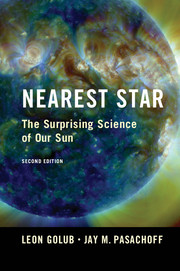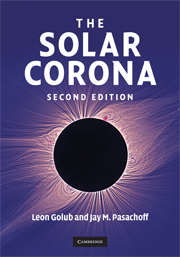Nearest Star
How did the Sun evolve, and what will it become? What is the origin of its light and heat? How does solar activity affect the atmospheric conditions that make life on Earth possible? These are the questions at the heart of solar physics, and at the core of this book. The Sun is the only star near enough to study in sufficient detail to provide rigorous tests of our theories and help us understand the more distant and exotic objects throughout the cosmos. Having observed the Sun using both ground-based and spaceborne instruments, the authors bring their extensive personal experience to this story revealing what we have discovered about phenomena from eclipses to neutrinos, space weather, and global warming. This second edition is updated throughout, and features results from the current spacecraft that are aloft, especially NASA's Solar Dynamics Observatory, for which one of the authors designed some of the telescopes.
- Two experienced solar astronomers provide the latest information from ground-based observations and from the current fleet of NASA (and other) spacecraft
- This second edition is updated throughout, and contains results from the current spacecraft that are aloft, especially NASA's Solar Dynamics Observatory, for which one of the authors designed telescopes
- Exciting, brand new photos from space
Reviews & endorsements
Review of the first edition: 'In Nearest Star, two of the world's leading solar scientists give us a fascinating and informative account of our sun as a star … Golub and Pasachoff do not simply present an account of scientific fact. Rather, they show us how the process of science works … Throughout, the authors emphasize why and how we study the sun at many different wavelengths and what has been discovered by looking at the sun in each of these wavelength regimes. Nearest Star is a delight to read. Golub and Pasachoff transmit not only their obvious expertise but also a genuine affection for the subject. Nearest Star will surely leave you with a renewed appreciation for the beauty, complexity, and importance of our nearest star, the Sun.' Jennifer Birriel, Astronomy
Review of the first edition: 'The subtitle of Nearest Star is The Surprising Science of our Sun. And it is surprising: our knowledge of this normal dwarf star that happens to be all-important to life on Earth is very far from complete. Many puzzles remain, even if we know far more than we did a few years ago, before data from spacecraft became available. In any case, Leon Golub and Jay Pasachoff are splendid guides to the subject, as both are highly distinguished astronomers who have paid special attention to the Sun. Nearest Star is a comprehensive survey, dealing with all aspects of solar research. It is well written and well illustrated, and there is a good glossary and a useful bibliography … If you are looking for a reliable, up-to-date and very readable account of modern solar science, with special emphasis on Earth–Sun relationships, then this is one for you.' Sir Patrick Moore, New Scientist
Review of the first edition: 'The book gives readable accounts of the Sun's evolution from its earliest state to its final fate and the spectrum of its visible light, again set in the context of past discoveries … I was impressed by the descriptive nature of the text, which has no mathematics or complex physics. This is a book for amateur astronomers and scientists who want to know what are the latest findings about the Sun and about some of the developments that led to them.' Ken Phillips, The Times Higher Education Supplement
Review of the first edition: 'A story with many facets and multiple links to fundamental physics that might surprise as well as engage the reader. The book is beautifully written and conveys the love that the authors have for the subject. Together, [the authors] are uniquely qualified to write a book on the Sun, and they have produced a truly fascinating tour, complete with an outstanding set of images. Nearest Star takes us on a multidimensional journey - in space, from the center of the Sun to the atmosphere of the Earth, and in time, from the Big Bang to our current arguments about global warming … In sum, Nearest Star provides an excellent overview of our current understanding of the Sun and its effects on Earth.' Ramon E. Lopez, Physics Today
'… enjoyable reading throughout.' BBC Sky at Night Magazine
'… a carefully composed, very readable account … I would recommend this book to specialist and non-specialist alike as a fine, 'non-preachy', and concise account of the current state of knowledge of the workings of our local star, the Sun, and also of the instruments by which that information has been obtained.' The Observatory
'The book is very readable … [it was] quite difficult to put down once I started it, the pages seeming to turn with alarming frequency … a great read!' Lyn Smith, Journal of the British Astronomical Association
Product details
May 2014Hardback
9781107052659
330 pages
235 × 156 × 22 mm
0.74kg
107 b/w illus. 16 colour illus. 1 map 2 tables
Available
Table of Contents
- Preface
- Acknowledgments
- 1. The Sun
- 2. The once and future Sun
- 3. What we see: the solar disk
- 4. What we don't see
- 5. Eclipses
- 6. Space missions
- 7. Between fire and ice
- 8. Space weather
- Bibliography
- Glossary
- Index.





